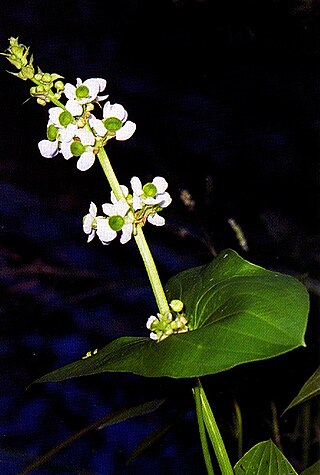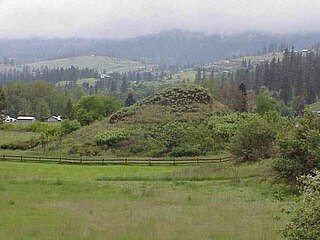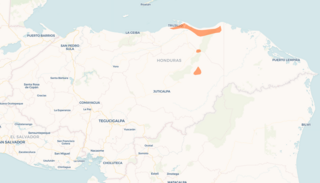Related Research Articles

The Santiam River is a tributary of the Willamette River, about 12 miles (19 km) long, in western Oregon in the United States. Through its two principal tributaries, the North Santiam and the South Santiam rivers, it drains a large area of the Cascade Range at the eastern side of the Willamette Valley east of Salem and Corvallis.

Penutian is a proposed grouping of language families that includes many Native American languages of western North America, predominantly spoken at one time in British Columbia, Washington, Oregon, and California. The existence of a Penutian stock or phylum has been the subject of debate among specialists. Even the unity of some of its component families has been disputed. Some of the problems in the comparative study of languages within the phylum are the result of their early extinction and limited documentation.

The Luckiamute River is a tributary of the Willamette River, about 61 miles (98 km) long, in western Oregon in the United States. It drains an area of Central Oregon Coast Range and the western Willamette Valley northwest of Corvallis.

The Treaty with the Kalapuya, etc., also known as the Kalapuya Treaty or the Treaty of Dayton, was an 1855 treaty between the United States and the bands of the Kalapuya tribe, the Molala tribe, the Clackamas, and several others in the Oregon Territory. In it the tribes were forced to cede land in exchange for promised permanent reservation, annuities, supplies, educational, vocational, health services, and protection from ongoing violence from American settlers. The treaty effectively gave over the entirety of the Willamette Valley to the United States and removed indigenous groups who had resided in the area for over 10,000 years. The treaty was signed on January 22, 1855, in Dayton, Oregon, ratified on March 3, 1855, and proclaimed on April 10, 1855.

The Kalapuya are a Native American people, which had eight independent groups speaking three mutually intelligible dialects. The Kalapuya tribes' traditional homelands were the Willamette Valley of present-day western Oregon in the United States, an area bounded by the Cascade Range to the east, the Oregon Coast Range at the west, the Columbia River at the north, to the Calapooya Mountains of the Umpqua River at the south.

Oregon Penutian is a hypothetical language family in the Penutian language phylum comprising languages spoken at one time by several groups of Native Americans in present-day western Oregon and western Washington in the United States. Various languages in the family are divided by dialects that are in most cases identical to the various identified tribal bands in the region.
Northern Kalapuyan is an extinct Kalapuyan language indigenous to northwestern Oregon in the United States. It was spoken by Kalapuya groups in the northern Willamette Valley southwest of present-day Portland.
Yoncalla is an extinct Kalapuyan language once spoken in southwest Oregon in the United States. In the 19th century it was spoken by the Yoncalla band of the Kalapuya people in the Umpqua River valley. It is closely related to Central Kalapuya and Northern Kalapuya, spoken in the Willamette Valley to the north.
The Wilson River language, also known as "Modern" Wankumara, is an Australian Aboriginal language of the Karnic family. It was spoken by several peoples along the Wilson River in Queensland. Of these, the Wanggumara (Wangkumara) and Galali may have migrated from the Bulloo River and abandoned their language when they arrived.

The AtfalatiIPA:[aˈtɸalati], also known as the Tualatin or Wapato Lake Indians are a tribe of the Kalapuya Native Americans who originally inhabited and continue to steward some 24 villages on the Tualatin Plains in the northwest part of the U.S. state of Oregon; the Atfalati also live in the hills around Forest Grove, along Wapato Lake and the north fork of the Yamhill River, and into areas of Southern Portland.

Indigenous peoples of the Northwest Plateau, also referred to by the phrase Indigenous peoples of the Plateau, and historically called the Plateau Indians are Indigenous peoples of the Interior of British Columbia, Canada, and the non-coastal regions of the Northwestern United States.
The Molala are a Native American people of Oregon that originally resided in the Western Cascades. There are few recorded sources about the Molala, the majority being unpublished manuscripts. This assortment includes the works of Albert S. Gatschet, Franz Boas, Leo J. Frachtenberg, Philip Drucker, Melville Jacobs, and Leslie Spier.

Kalapuyan is a small extinct language family that was spoken in the Willamette Valley of Western Oregon, United States. It consists of three languages.

The Confederated Tribes of the Grand Ronde Community of Oregon (CTGR) is a federally recognized tribe of Indigenous peoples of the Northwest Plateau. They consist of at least 27 Native American tribes with long historical ties to present-day western Oregon between the western boundary of the Oregon Coast and the eastern boundary of the Cascade Range, and the northern boundary of southwestern Washington and the southern boundary of northern California.
Babine–Witsuwitʼen or Nadotʼen-Wetʼsuwetʼen is an Athabaskan language spoken in the Central Interior of British Columbia. Its closest relative is Carrier. Because of this linguistic relationship together with political and cultural ties, Babine–Witsuwitʼen is often referred to as Northern Carrier or Western Carrier. Specialist opinion is, however, that it should be considered a separate, though related, language.

The Kott (Kot) language is an extinct Yeniseian language that was formerly spoken in central Siberia by the banks of the Mana River, a tributary of the Yenisei river. It became extinct in the 1850s. Kott was closely related to Ket, still spoken farther north along the Yenisei river. Assan, a close relative, is sometimes considered a dialect of Kott. The term kott may be derived from Buryat qota 'town', applied to neighbouring non-pastoral peoples, including the last few Kotts.
Itonama is a moribund language isolate once spoken by the Itonama people in the Amazonian lowlands of north-eastern Bolivia. It was spoken on the Itonomas River and Lake in Beni Department.
The Mohawk or Mohawk River people were a tribe or band of the Kalapuya, who originally lived in the Mohawk River area of present-day Oregon in the United States. They spoke a dialect of the Central Kalapuya language.

Pech or Pesh is a Chibchan language spoken in Honduras. It was formerly known as Paya, and continues to be referred to in this manner by several sources, though there are negative connotations associated with this term. It has also been referred to as Seco. There are 300 speakers according to Yasugi (2007). It is spoken near the north-central coast of Honduras, in the Dulce Nombre de Culmí municipality of Olancho Department.
The Takelma–Kalapuyan languages are a proposed small language family that comprises the Kalapuyan languages and Takelma, which were spoken in the Willamette Valley and the Rogue Valley in the U.S. state of Oregon.
References
- ↑ Wurm, Stephen A.; Mühlhäusler, Peter; Tryon, Darrell T. (1996). Atlas of Languages of Intercultural Communication in the Pacific, Asia, and the Americas. ISBN 9783110134179.
- ↑ Central Kalapuya at Ethnologue (18th ed., 2015) (subscription required)
- ↑ Jacobs, Melville (1945). Kalapuya Texts . Seattle: University of Washington Press.
- 1 2 3 4 Banks, Jonathan (2007). "The Verbal Morphology of Santiam Kalapuya". Northwest Journal of Linguistics. 1 (2): 1–98. Retrieved 1 January 2016.
